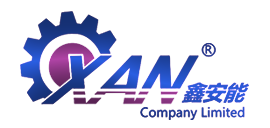
Head secondary/secondary alloy rubber belt cleaner-SC16
It is specially designed for conveyor belts with harsh conditions and continuous operation. As a secondary cleaner in the cleaning system, it can clean the remaining parts on the belt, especially the adhered fine particles. There are two types of cutter heads: polyurethane cutter heads and carbon tungsten and alloy cutter heads.
This model of product adopts carbide tip according to technical requirements, which can bring you continuous and outstanding cleaning effect.
SC16 Model Table:
|
Type |
B(MM) |
Blade Number(150MM/piece) |
Blace W A(150xN) |
Blade Size (MM) |
Rack Size L(MM) |
|
SC16-800 |
800 |
5 |
700 |
150x150 |
1600 |
|
SC16-1000 |
1000 |
7 |
1050 |
150x150 |
1800 |
|
SC16-1200 |
1200 |
8 |
1200 |
150x150 |
2000 |
|
SC16-1400 |
1400 |
9 |
1350 |
150x150 |
2200 |
|
SC16-1600 |
1600 |
11 |
1650 |
150x150 |
2600 |
|
SC16-1800 |
1800 |
12 |
1800 |
150x150 |
2800 |
|
SC16-2000 |
2000 |
13 |
1950 |
150x150 |
3000 |
|
SC16-2200 |
2200 |
15 |
2250 |
150x150 |
3200 |
|
SC16-2400 |
2400 |
16 |
2400 |
150x150 |
3400 |
▲Blade material: special carbide (imported tungsten carbide), blade size 150*14*2.5mm, normal life span 2 years;
▲Blade base: The iron plate of the blade base contains travel holes, which can be adjusted separately according to the shape of the belt to ensure continuous contact between the cleaner blade and the belt;
▲Cutter head base: Specially designed buffer rubber seat to ensure that the cleaner works with constant pressure. When passing through the belt buckle, it will deflect to allow it to pass;
▲Bracket structure: The main frame and the auxiliary frame can be stretched and separated for easy installation. The auxiliary frame is a torsion bar and can be rotated;
▲Tensioner: The component is thickened and strengthened, 10mm thick bending part + steel casting, 300mm length and stroke height adjustable, strong structural design can be applied to a variety of challenging working conditions, such as high-speed belts and large-load belts.
▲Tungsten carbide material properties:
1.Strength – Tungsten carbide has very high strength for hard and rigid materials. Compressive strength higher than almost all melted or wrought metals and alloys.
2. Rigidity – The rigidity of tungsten carbide is 2 to 3 times that of steel and 4 to 6 times that of cast iron and brass. Young's modulus is as high as 94,800,000 psi.
3. High resistance to deformation and deflection are very valuable properties of tungsten carbide. These include spindles for precision grinding and rollers for strip or sheet metal.
4. Impact resistance – For hard materials with very high rigidity, impact resistance is high. Tungsten carbide is a hardened tool steel with low hardness and high compressive strength.
5. Heat and oxidation resistance – Tungsten carbide can reach approximately 1000°F in oxidizing environments and 1500°F in non-oxidizing environments
6. Low temperature resistance (low temperature resistance) – Tungsten carbide maintains toughness and impact strength in the low temperature range. (-453°F).
7. Thermal conductivity – The range of tungsten carbide is twice that of tool steel and carbon steel.
8. Electrical Conductivity – Tungsten carbide has the same range as tool steel and carbon steel.
9. Specific heat – The content of tungsten carbide ranges from 50% to 70% of carbon steel.
10. Weight – The specific gravity of tungsten carbide is 1-1/2 to 2 times that of carbon steel.
11. Hot Hardness – As the temperature increases to 1400°F, tungsten carbide retains most of its room temperature hardness. At 1400°F, some grades are equal to the hardness of steel at room temperature.
12. Tolerances - Many surfaces of even complete parts can be used the way they came from the furnace, "sintered", such as mining or drilling briquettes. In those parts that require precise grinding accuracy, such as stamping dies, close tolerance preforms are provided for grinding or EDM.
13. Fastening methods – Tungsten carbide can be fastened to other materials by any of three methods; brazing, epoxy bonding, or mechanical methods. When providing preforms for grinding or EDM, the low thermal expansion rate of tungsten carbide must be carefully considered.
14. Coefficient of Friction – Tungsten carbide compositions exhibit low dry friction coefficient values compared to steel.
15. Quenching – Tungsten carbide compositions provide excellent resistance to surface wear and welding properties.
16. Corrosion resistance – The corrosion resistance of special grades is close to that of precious metals. For many applications, conventional grades provide adequate corrosion resistance conditions.
17. Wear resistance – Under conditions such as abrasion, corrosion and abrasion, the wear length of tungsten carbide is 100 times that of steel. Tungsten carbide has better wear resistance than wear-resistant tool steel.
18. Surface treatment – The surface treatment of the sintered part is approximately 50 micro inches. Surface, cylindrical or internal grinding using diamond wheels can produce products of 18 micro inches or better and can produce products as low as 4 to 8 micro inches. Diamond grinding and honing can produce 2 micro-inches and polish as low as ½ micro-inch.
19. Dimensional stability – Tungsten carbide does not undergo phase changes during heating and cooling and maintains its stability indefinitely. No heat treatment is required.
Address
Bingang Road, Fankou Street, Echeng District, Ezhou City, Hubei Province, China
Tel
TradeManager
Skype
VKontakte